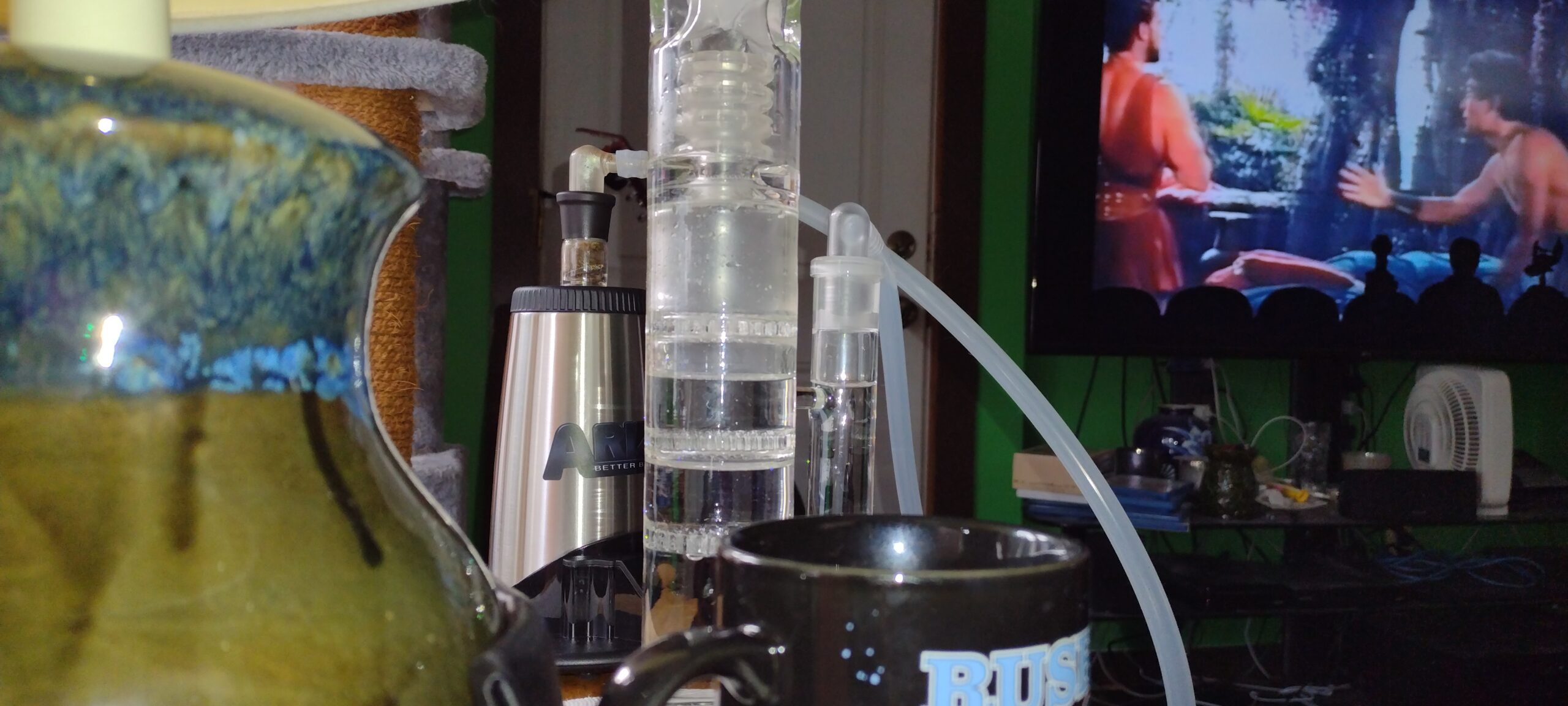My Experience with the Arizer V-Tower
I’ve been using the Arizer V-Tower desktop vaporizer for the last 24 hours, 😇 and I absolutely love it. The V-Tower is incredibly easy to use and provides a smooth, consistent vaping experience. I usually set mine at 210°C for most of my session and bump it up to 230°C at the end to finish off the material. This allows me to extract all the cannabinoids while avoiding the bad taste of over-cooking.
I discovered on Arizer’s Web site that they recommend preheating the unit at 260°C with the glass cyclone bowl on it for at least 20 minutes to heat the glass to temperature.
One of the best aspects of my setup is pairing the V-Tower with my 5-chamber bong. This bong features three honeycomb chambers and one showerhead chamber, holding just an ounce of water. It delivers an exceptional experience by filtering the vapor without creating the heavy pull you’d get with a larger water volume. For example, my 18-inch beaker bong holds more water and has a heavier draw, which makes it less ideal for vaping sessions. The 5-chamber bong strikes a perfect balance—capturing heavy particles while allowing smooth, flavorful vapor to pass through.
Additionally, I purchased my V-Tower directly from Arizer. Shipping was quick, arriving within a couple of days from Canada. Even when I had a broken glass piece, Arizer’s customer service was outstanding—they sent me a replacement practically overnight. I highly recommend purchasing directly from them; they’re a fantastic company.
A Guide to ABV (Already Been Vaped Cannabis)
One interesting aspect of using a desktop vaporizer like the V-Tower is the leftover cannabis, known as ABV. Many people throw it away, but ABV can still contain cannabinoids like THC, CBD, and CBN, depending on your vaping temperature.
What Is Left in ABV?
The amount of cannabinoids remaining in ABV depends on the temperature you vape at:
| Temperature (°C) | Cannabinoid Extraction | ABV Potency | Best Use for ABV |
|---|---|---|---|
| 157-190°C | Mild THC extraction | Moderate | Great for edibles or direct consumption. |
| 190-221°C | Most THC extracted | Low | Suitable for cooking or making cannabutter. |
| 221°C+ | Almost all THC extracted | Minimal | Can be composted or used as a mild sedative. |
At 250°C to 260°C, the range I use, most of the cannabinoids are fully extracted, leaving ABV with minimal potency. However, there may still be trace amounts of CBN or other minor cannabinoids, which can have a sedative effect if consumed.
Using ABV Effectively
If you vape at lower temperatures, your ABV will have enough cannabinoids left to be reused. Here are some common ways to make the most of it:
- Edibles: Mix ABV into baked goods like brownies or cookies. Since the cannabinoids are already decarboxylated, you don’t need to heat them further.
- Cannabutter: Simmer ABV with butter or oil to create a versatile cooking ingredient.
- Capsules: Grind ABV finely and fill empty capsules for an easy way to dose.
- Direct Consumption: ABV can be eaten as-is, though the taste might not be pleasant.
If you’ve vaped at high temperatures like I do, the ABV will likely have very little potency left. In this case, using it for composting or as a mild sedative may be more practical.
Summary
The Arizer V-Tower has been a game-changer for my vaping experience. Its ease of use, combined with the ability to pair it with my 5-chamber bong, provides a smooth and enjoyable session every time. Arizer’s excellent customer service is another reason I highly recommend this product.
For those interested in making the most of their ABV, understanding the effects of vaping temperatures is key. While higher temperatures extract nearly all cannabinoids, ABV from lower temperatures can still be reused for edibles, cannabutter, or direct consumption. If you’re curious about ABV’s potential, experimenting with these methods can be a rewarding experience.

Leave a Reply